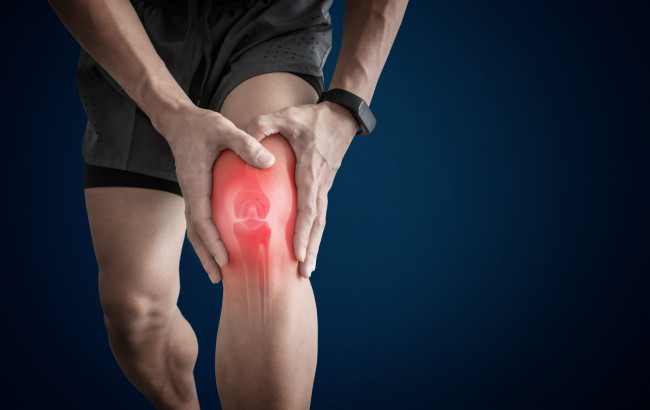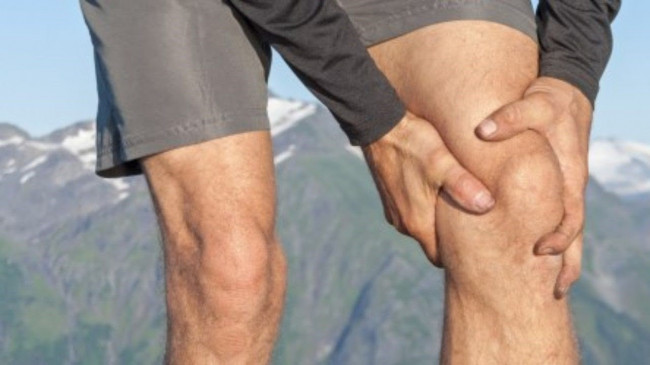A person experiencing anterior knee pain feels pain at the front and center of their knee. Injuries or conditions related to muscles or bones are very common causes of this complaint. One in four adults suffers from knee pain. A knee injury can cause pain in any of the different tissues located at the anterior knee. It is one of the most common reasons why people consult a physician about knee conditions. Despite this, doctors refer to anterior knee pain as "patellofemoral pain" since it involves the patellofemoral joint.
Who Is At Risk Of Suffering Anterior Knee Pain?
Females are 2.23 times more likely to suffer from anterior knee pain. Teenagers and young adults are also more likely to suffer from this condition. According to a 2017 study, 30% of adolescents suffer from anterior knee pain.
Those who exercise regularly and perform more physical or repetitive activities are more likely to suffer from anterior knee pain, such as:
Runners
Jumpers
Cyclists
Skiers
Athletes
It is also possible for a person with a history of knee injury factors to be predisposed to anterior knee pain.

Symptoms Of Anterior Knee Pain
The symptoms of anterior knee pain can vary from person to person. You may feel sharp stabbing pain that comes and goes and also stinging pain on the outside of the knee when kneeling. The most common symptom is pain behind or around the kneecap. As a result of activities that put a load on the joint, such as:
Going down the stairs
Wearing high heels
Using a car clutch
Sitting for long periods of time, such as when watching a movie or driving for a long distance
Squatting
Additionally, a person may report instability of their knees, especially when using stairs or ramps. Symptoms of crepitus include grating sensations or sounds when moving the knee. When the intensity of an activity, the surface, or the equipment changes, pain may occur. Moreover, when the pain persists, a person may also experience quadriceps muscle weakness.
Common Causes Of Anterior Knee Pain
These include:
Osgood-Schlatter Disease
Another common cause of anterior knee pain in children and adolescents is Sinding-Larsen Johansson disease. Unlike Osgood-Schlatter disease, it occurs at the inferior pole of the patella. A common cause of anterior knee pain is Osgood-Schlatter and Sinding-Larsen Johannson disease, which are aggravated by jumping and kneeling.
Bipartite Patella
This is a common occurrence in adolescence and may cause pain and tenderness. In the majority of cases, it is asymptomatic, but the severity of the condition is variable, and it may require surgical intervention.
Hypermobility
The knee is hyperextended and hyperflexed as a result of this condition. Typically, this occurs during the pubertal growth spurt. It is important to note that chondromalacia patellae is not a clinical diagnosis. It refers to softening of the articular cartilage of the patella seen on MRI or at arthroscopy. Anterior knee pain does not correlate with cartilage damage.
Patellar Tendinopathy (jumper's knee)
Overuse disorders such as patellar tendinopathy are common and painful. This disease is the adult equivalent of Sinding-Larsen Johannsson disease. Eccentric training is the most effective treatment.
Bursitis
Housemaid's knee (prepatellar bursitis). Deep infrapatellar bursitis (parson's knee): inflammation occurs posterior to and distal to the patella. Usually, anserine bursitis presents with spontaneous medial knee pain and tenderness in the inferomedial region of the joint. Diabetes mellitus and obesity are associated with the condition.
Isolated Patellofemoral Arthritis
Patellofemoral osteoarthritis (PFOA) is a common form of knee osteoarthritis among middle-aged and elderly individuals. Research suggests that PFPS may be a precursor to PFOA in a proportion of young adults.
Patellar Misalignment
In many cases, this condition is accompanied by damage to the chondral surface of the PFJ. It is more common in girls and can result in recurrent dislocations or subluxations of the patella. In cases of recurrent instability, surgery may be indicated.
What Can You Do For Your Anterior Knee Pain?
The symptoms can be reduced by changing your lifestyle and altering the known causes, as previously explained. It is only you who can help manage your symptoms.
Weight Management
It is possible for additional weight to affect the patella. When squatting and descending stairs, the patellofemoral joint can hold eight times your body weight. Thus, a small increase in weight has a significant impact on the patellofemoral joint. A small amount of weight loss, however, can have a significant impact on the reduction of pain. You are the only person who can maintain a healthy weight. According to research, individuals with a Body Mass Index (BMI) that is classified as 'obese' are up to four times more likely to develop patellofemoral pain. To determine whether you should consider weight management, follow this link to an NHS BMI Calculator.
Painkillers
You may be able to perform the exercises properly if you take simple pain relievers, such as paracetamol or ibuprofen. If your pain is severe, do not exceed the daily allowance of these medications. It's important to consult Dr Rao Ali or your physician before taking any new medication to ensure it's appropriate for your condition. Furthermore, consult your pharmacist, practice nurse or general practitioner if you are unsure what medication you can take.
Exercise
Keep your thigh and buttock muscles strong to avoid putting excessive pressure on your kneecap. Exercises to strengthen and stretch muscles several times a day should be performed for at least 12 weeks in order for any muscle imbalance or weakness to be noticeably improved, but by doing so, your pain can be reduced. Physiotherapists in Ayrshire and Arran have developed exercise clips to help strengthen the correct muscles.
Conclusion:
In conclusion, recognizing and assessing the risk factors associated with anterior knee pain is a proactive approach to maintaining optimal knee health. Factors such as improper biomechanics, muscle imbalances, and overuse can contribute to this discomfort. By staying informed about these risks, individuals can adopt preventive measures, including proper exercise techniques, balanced muscle training, and seeking professional advice when needed. Taking these steps enhances the likelihood of enjoying sustained knee health and minimizing the chances of developing anterior knee pain in the future.
It's essential to prioritize a holistic approach to knee wellness, incorporating regular exercise, maintaining a healthy weight, and addressing any underlying issues promptly. Whether through targeted exercises, lifestyle adjustments, or seeking professional guidance, individuals can mitigate the risk of anterior knee pain and promote overall well-being. By understanding and managing these risk factors, one can embark on a journey towards a more active, pain-free lifestyle.












